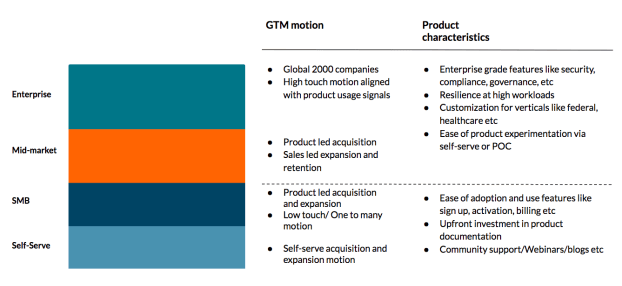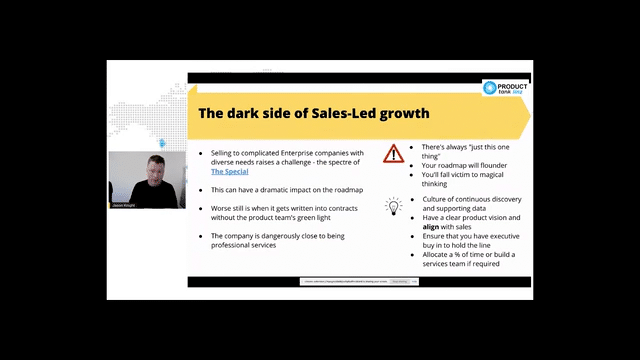In many organizations, product leaders have a constant stream of tasks coming in from customer-facing teams. Feature requests, bug fixes – all of them urgent. It can take years to master the practice of finding a healthy balance somewhere between allowing these non stop requests to dictate your product roadmap, and ignoring them altogether.
Good prioritization decisions can unlock massive customer engagement and product growth. Bad prioritization decisions can bog down engineering and lead to half-baked or underused product features. And while product leaders don’t want their roadmap to be dictated by incoming customer feature requests, they do want to be paying attention to how customers are using the product and listening to how they think it could better serve their needs. It’s important to have an intentional and thoughtful handoff process for each feature request.
But there’s a fundamental flaw in the way most Product teams accept and organize customer feedback that limits their ability to make the best possible prioritization decisions. Product shouldn’t be doing all the legwork in triaging features requested by customers.
Customer Success, the people with the most precise understanding of the customers’ needs and use cases, should be playing a much larger role in how those requested features are prioritized.
Here are the core elements of a customer feedback process that can drive a more strategic relationship between Product and Customer Success, and, in turn, better product decisions.
1. Have a Single Source of Truth
When customer-facing teams have an open channel to submit feature requests at any given time, it can be difficult for product leaders to comb back through, surface all the requests, and then triage the projects based on the information they have.
The quickest win for product leaders is, therefore, to encourage customer-facing teams to have a single place where they can document and update all their feature requests.
It’s also a win for Customer Success leaders because having a single dashboard for customer feedback helps ensure that nothing gets lost or buried.
2. Track Account Size(s) and Impact Associated Per Request
In the same document, customer-facing team members should include the account size and expansion opportunity associated with each request.
Many teams include the reach a feature has when submitting the request, meaning the number of customers the change will impact within a given time period. When you sell into a wide range of company sizes or offer enterprise options, it’s important to also include the account size of each company that is requesting each feature.
Then, the team member submitting the request should also consider the impact of the feature. There are a lot of ways of looking at this, but a simple way of thinking about “impact” is to understand what a customer’s core use cases are with the product, and identifying whether this requested bug fix or feature is associated with one of those core use cases.
To take “impact” a step further, customer-facing teams can include a severity rating for each request. In other words, how painful is this problem? Each request would include a severity rating on a scale of “this isn’t an important problem” to “I’m on fire, please put out the fire.”
Bringing this information together—the account size, number of accounts, and impact associated with each feature request—can help product leaders start to get a feel for the weight of each task.
3. Track Account Health and Renewal Dates
Product leaders also need to get a sense of the risk associated with not doing any given task. A good way to track risk is for Customer Success teams to document the account health and renewal date associated with each customer feature request.
Many teams have their own calculations for account health that consider variables like product usage and customer sentiment. Customer health scores can be even more informed if customer-facing teams are answering the following questions:
- Problem – Does the product solve a severe, ongoing problem for the customer?
- Features – Does the product have the features necessary to solve the problem?
- Usability – How simple, fast, and intuitive are the features?
- Reliability – Do the features work consistently?
Together, the answers to these questions can help Product and Success teams get a more complete picture of customer health (and customer risk).
Then, the team members submitting the request can also take note of the customer’s renewal date. That information, coupled with account size and account health, gives product leaders a solid understanding of the urgency of each request.
A report that pulls together the account size, impact, account health, and renewal date associated with each feature might look something like this:
4. Incorporate “Effort” and Prioritize Features That Maximize Renewal Rate
With a complete understanding of the most critical customer-requested features, product leaders can then incorporate a total estimate of the effort associated with building each project (including the total amount of time estimated from team members in engineering, design, and product). Intercom’s Sean McBride recommends estimating this as “a number of ‘person-months’ – the work that one team member can do in a month.”
Product leaders can take the customer feedback document and their estimates of the effort required to complete each feature, and strategize with their peers in Customer Success to identify which features need to be built to maximize the company’s renewal rate and revenue.
5. Close the Loop: Let Customers Know If Their Request Has Been Prioritized
Once a feature has been prioritized, product leaders can track those prioritizations decisions (and progress) in the same dashboard that the Success team uses to aggregate data about requests. This creates a simple process for customer-facing team members to facilitate a “discussion” between Product and the customer—even if Product is never communicating directly with that customer.
Customer-facing team members should let customers know if and when the request has been prioritized, and when it has been completed. This ultimately creates a win-win scenario where customers feel that their opinion not only matters but is truly influencing the product, and it gives the Product team critical insight into the outcomes the customer is looking for with each request.
The Intersection of Product Management and Customer Success
When Product can lean on Customer Success to proactively aggregate the data that only Success teams have access to, this can save a lot of valuable time for product leaders. And instead of using incomplete data to determine which features should be built first, Product and Success leaders can work together to improve the customer experience and maximize business outcomes.










Comments
Join the community
Sign up for free to share your thoughts